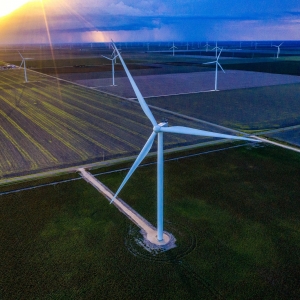This is Eileen Wray-McCann for Circle of Blue. And this is What’s Up with Water, your “need-to-know news” of the world’s water, made possible by support from people like you.
The World Health Organization made a welcome announcement in the global fight against disease. The organization declared that Africa is free of wild poliovirus after decades of effort to eradicate the preventable but debilitating and incurable waterborne disease. Matshidiso Moeti, the WHO’s Africa director said the announcement marked “an incredible and emotional day.” Africa’s last reported case of the wild poliovirus was in Nigeria in 2016. Patchy surveillance across parts of the continent means that some scattered cases could still remain undetected. The continent is not free of all forms of polio, however, as a rare form of the virus that mutated from the vaccine lingers in 16 countries. Entirely eradicating polio and its crippling effects requires more than 90 percent of children to receive immunizations. Mass campaigns to spread the vaccine have been put on hold due to Covid-19.
In science news, researchers from the UK are using satellite data to provide a more nuanced assessment of the world’s groundwater. Their study of 37 major aquifers found that most of these groundwater systems do not show consistent trends in groundwater storage. Supplies varied with weather conditions. Dry periods resulted in groundwater depletion, while episodes of intense rainfall boosted water storage. Cloudbursts are expected to become more severe in a warming climate, and the researchers say it may be possible to capture water from heavy rains and redirect it to aquifers. Although the satellites provide more detail on major aquifers, the researchers caution that satellite data are not sharp enough to detect local groundwater depletion. That work will require smaller-scale networks on the ground. The study did affirm that farm irrigation is a major factor in groundwater scarcity, especially for three heavily irrigated basins. The North China Plain, California’s Central Valley, and India’s Ganges Plain all showed long-term groundwater declines.
Groundwater supplies are insecure even in places not commonly associated with water stress. That is the case for Ulrichstein, a small town in the center of Germany. The community of 3,000 people gets its water from six shallow wells that are no more than three meters deep. In recent years the water table has dropped. Some say it’s because the winters have been milder and groundwater hasn’t been recharged as much as in the past. Others attribute the decline to pumping by the city of Frankfurt, a much larger neighbor that shares the aquifer. Either way, Ulrichstein’s wells are supplying about half the water that is needed, according to the German news site Deutsche Welle. The town is exploring several options to deal with the shortage: drilling deeper wells, building a canal to connect with a nearby water system, or even trucking water in. Whatever option the town selects, it will increase the cost of water that is already some of the most expensive in the country. Residents of Ulrichstein pay three times more than people in similar German communities. Water shortages have caught the attention of the country’s environment minister. She plans to host a water summit next spring, to discuss the future of Germany’s water resources.
In the United States, Iowa residents are facing the threat of cyanobacteria in the Des Moines River. Des Moines Water Works provides drinking water to half a million people in Iowa’s capital region. It said that one of its water sources has been essentially unusable this summer because of high levels of toxins. Iowa Capital Dispatch reports that the utility is not using water from the Des Moines River because there is too much microcystin, a toxin produced by cyanobacteria. Microcystin levels in the river are up to ten times higher than a federal guideline for drinking water. Cyanobacteria, also known as blue-green algae, thrive in warm, nutrient-rich waters. In Iowa, those extra nutrients come from fertilizers and manure linked the state’s massive agriculture industry, which is dominated by corn, soybeans, and hogs. Instead of drawing from the Des Moines River, the utility is getting drinking water from its other source, the Raccoon River, which has not been affected. Cyanobacteria are not the only threat to the region’s rivers. Nitrate concentrations have also spiked in recent years. When nitrate levels are high, Des Moines Water Works must engage a specialized treatment system that is costly to operate. To avoid water quality problems related to the river, the utility is considering investing in a well near the river’s bank. The well would draw water from underground that is free of toxins and nitrates. Water Works CEO Ted Corrigan said that the well option could cost tens of millions of dollars.
And that’s What’s Up With Water from Circle of Blue, which relies on your support for independent water news and analysis. Please visit
circleofblue.org and make a difference through your tax-deductible donation.





